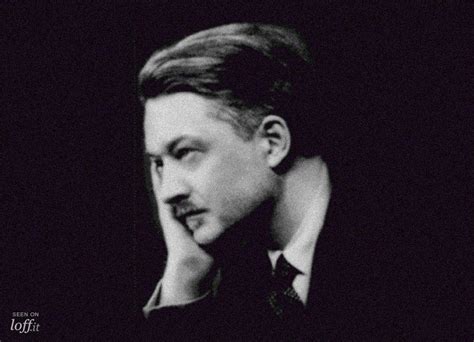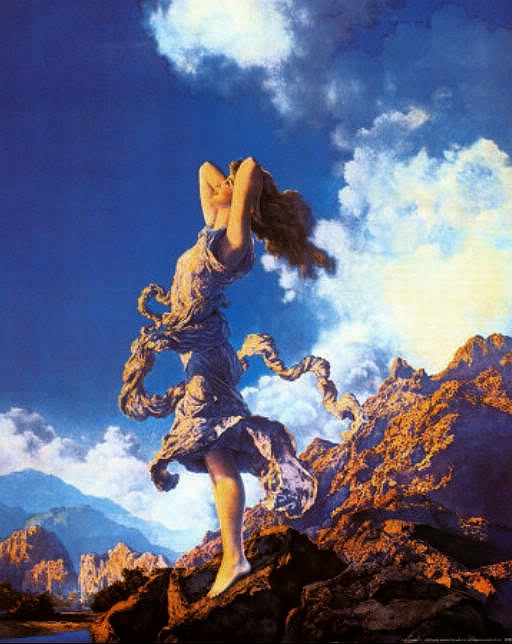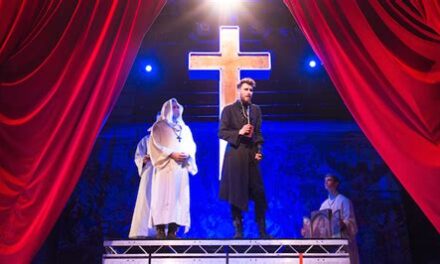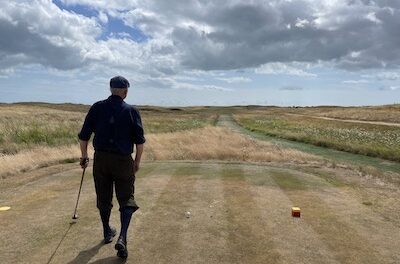Jacques Maritain was first introduced to English-speaking audiences in 1923 by the translation of Art et scolastique (1920). Since then, both Art and Scholasticism and Maritain’s other major work in aesthetics, Creative Intuition in Art and Poetry (1953), have continued to attract a reading public, even though the Thomism that he advocated with Etienne Gilson, Yves R. Simon, and Mortimer J. Adler has ceased to be a significant force in American intellectual life.
During the height of his popularity, the 1940s and 1950s, Maritain was also known as a major social and political philosopher who has influenced the framing of the United Nations Universal Declaration of Human Rights (1948). By the end of the sixties, Maritain’s reputation had suffered badly because of the controversy over The Peasant of the Garonne (1966). In a period in which almost all Catholic intellectuals celebrated the aggiornamento of Vatican II, Maritain’s criticism of changes in Catholic thought and practice was bound to be unpopular. Many who had been drawn to Maritain because of his aesthetic sensibility and progressive ideas felt betrayed. This situation was ironic since Pope Paul VI had had chosen Maritain to receive the Vatican council’s “Message to Intellectuals” from his own hands.
“Many decades have passed since the Council and the Peasant episode. The continuing interest in Maritain’s aesthetics is intriguing, since the same Christian and Thomistic principles that undergird The Peasant of the Garonne also inform the aesthetic writings. One may reasonably inquire what is it that makes Maritain’s Christian, even medieval, assumptions about the nature of reality more palatable to the reader of these works. Are they less intrusive and, thus, easier to ignore? I think not.
Although it is possible to appreciate many of Maritain’s specific insights without acknowledging his religious frame of reference, the overall “shape” of his aesthetics cannot be fully perceived without recognizing its vital connections with the content of Maritain’s entire philosophy. Consequently, as I survey the spiritual background of his aesthetics some portion of Maritain’s larger vision will, I hope, emerge.
Maritain was reluctant to use the term aesthetics. He wanted to disassociate himself from the modern aesthetics, which restricted the consideration of art to the fine arts, and beauty to the spectator’s perception of it. Maritain’s revival of two ideas—art as a virtue and beauty as a transcendental—from the classical tradition, upon which to erect the foundation of Art and Scholasticism, attest to his early antimodernist posture. With few exceptions, most of Maritain’s comments on beauty were limited to establishing its objective and transcendental qualities. But his primary concern was always to explore the inner dynamics of the artistic habitus. His most important concepts — poetry, poetic knowledge, the spiritual preconscious, creative intuition-emerge out of this preoccupation with the virtue of art.
Maritain’s work appears different at different times, depending on whether you are reading Art and Scholasticism, from the 1920s, The Situation of Poetry, from the 1930s, or Creative Intuition from the 1950s. As his understanding of the virtue of art deepened, Maritain’s emphasis shifted from the philosophy of art to the philosophy of poetry, and finally, to the philosophy of creativity. It is possible, I think, to speak of the development of the modernist connotations Maritain wished to avoid. Francis J. Kovach, himself a Thomist, provides a definition that applies to Maritain: “aesthetics is a general field of many specific sciences, all dealing in some manner with beautiful things.” In using this definition, we must keep in mind that the artisan, who shares the habitus of art with the artist, creates useful things that may or may not be beautiful. As Eric Gill noted, Maritain’s theory of art contains a message to artisans, encouraging the marriage of beauty and usefulness in their work.
Maritain was always a friend to the artists. The painters Georges Rouault and Marc Chagall, the writers Jean Cocteau and Julien Green, and composer Arthur Lourie were among his closest. His wife Raïssa was a poet. But his constant attention to artistic creativity cannot be explained by the mere fact of these close friendships. Maritain sought their help in aesthetic matters and they his, as one can see in his Réponse à Jean Cocteau (1926). The slant of Maritain’s mind was certainly influenced by these associations—by Rouault in particular—but even more significant was his determination to apply the principles of Christina philosophy, learned mainly from Aquinas, to the situation of modern art. Art and Scholasticism states clearly the religious character of his project. Here Maritain traces the meaning of art and beauty back to an original source and supreme analogate—God. Maritain writes,
“{The medieval Doctors} knew that the virtue of Art is predicated pre-eminently of God, as are Goodness and Justice, and that the Son, in plying His poor man’s trade, was still the image of the Father and of His never-ceasing action. (AS 21) God is beautiful. He is the most beautiful of beings, because as Denis the Areopagite and Saint Thomas explain, his beauty is without alteration or vicissitude, without increase or diminution. . . . He is beautiful through Himself and in Himself, beautiful absolutely” (AS 30-31).
Similar instances in which Maritain’s basic concepts are rooted in theology exist throughout his writings, as in his treatment of epistemological realism and his justification of human rights. In both cases, the basis of Maritain’s argument is an account of being whose intelligibility and purposiveness are guaranteed by the perfect intelligence and finally of its Creator. His aesthetics are no different: without the instrument of analogical reasoning derived from his Thomistic realism, Maritain could never have become a philosopher in the first place. It is no accident that he was baptized before he began his philosophical writing.
By reasoning analogically Maritain can to draw a likeness between the human virtue of art and the creativity of God. Both minds are creative, but human intelligence must acquire its art through the struggle of habituation. Once a person has become “firmly disposed” toward making he or she can claim the habitus of art. God, by contrast, created out of His essence without a need for formation in virtue. As we will see, Maritain’s lifelong meditation on this comparison between human and divine intelligence provided the source of his most provocative insights into the creative act.
However, the swelling self-consciousness of modern artists has effaced the difference between these two orders of intelligence and creativity. As a result, their art has also become inflated beyond its boundaries by being confused with the other virtues. Neither a form of knowledge nor wisdom, art belongs instead to the practical intellect, because it does not seek knowledge for its own sake but to make something. Hence, artists betray their art when they begin to teach or preach: beauty should be their sole aim. Works of art should not be employed as mouthpieces for philosophy or an ideology.
Artists must resist even the demands of prudence, the supreme moral virtue, because art serves the good of the work alone, not the good of human life (AS 15). This rather blunt statement indicates how strenuously Maritain sought to distinguish art from the other virtues to protect both its freedom and the source of its fecundity. Maritain’s rule seems to be that in trying to become more—whether it be God, metaphysics, or politics—art invariable becomes less.
The sole talk of artists is to create beauty in their work. Maritain describes beauty as an effect of art moving outward from the mind of the maker informing the thing made, as Aquinas in Summa Theologica moves from God to creation. Even more reminiscent of the method in the Summa is the way Maritain’s meditation on effects turns his mind toward their cause. Phenomenal beauty invariably reminds him of transcended beauty to all (CI 162), making it impossible to experience sensual beauty in isolation from the beauty of God.
The artist who created beauty for the senses draws upon this more profound beauty, while the spectator who experiences it is left with a residue of longing for a more perfect beauty. Beauty “is lacking a lack. . . . A totally perfect thing is untrue to the transcended nature of beauty. And nothing is more precious than a certain sacred weakness, and that kind of imperfection through which infinity wounds the finite” (CI 167). Although Plato and Plotinus can be heard speaking clearly in this account of transcendental beauty, it is from Thomas Aquinas that takes his general definition: beauty is “that which upon being seen pleases” (id quod visum placet) and its basic characteristics are order, proportion, and clarity (AS 23-24).
His use of Thomas’s language is not exact, as Umberto Eco has pointed out, and his elaboration of these definitions goes far beyond Thomas himself. But it should be said that Maritain never intended to become a twentieth-century replica of the Angelic Doctor. In revitalizing the tradition of spiritual wisdom, Maritain found that being a Thomist required originality as well as fidelity.
For example, Maritain went well beyond St. Thomas in explaining the intellectual matrix aesthetic experience. Our delight in beauty overflows from the act of knowing—the “being seen” of a beautiful object (CI 161). The three characteristics of beauty are derived from the way each gives pleasure to the intellect. A beautiful thing has integrity insofar as it pleases the mind with the “fullness of Being,” proportion because it pleases the mind with order and unity, and radiance since the mind delights in its light and intelligibility (AS 25; CI 161). Beauty does not startle the mind like a stranger knocking but awakens it with a familiar touch. Maritain puts it this way,
“The intelligence delights in the beautiful because in the beautiful it finds itself again and recognizes itself, and makes contact with its own light. This is so true that those—such as Saint Francis of Assisi—perceive and savor more the beauty of things, who know that things come forth form an intelligence, and who relate them to their author” (AS 25).
Every experience of beauty is made possible by a dynamic exchange between the eye, the thing, and God. Maritain believed that making this relation explicit would heighten our delight rather than subvert it. The reference to Saint Francis typifies the engaged quality of Maritain’s spiritualized aesthetic. Such allusions admittedly, often blur the edges between his philosophy and theology. So does his analogical use of the divine nature to describe art and beauty.
But Maritain’s method was intentional, even if its effect may not be as clear as he wished. He always insisted that philosophy could make various uses of theology and remain a sound philosophy. In An Essay On Christian Philosophy (1933), Maritain outlines the advantages that a philosopher who is also a Christian may rightfully draw from the resources of his faith. Here he elaborates further the project of “liberating the intelligence,” which he had proposed at the time of Art and Scholasticism. His conversion to Catholicism and his discovery of Aquinas had freed him, as Maritain stated, from the artificial constraints placed upon the intellect by the Cartesian idea of mathematical certitude. The “Christian” philosopher need not blind himself to the “objective data” that informs his faith.
The only condition placed upon the use of these data is that philosophy “scrutinizes them according to its own order” (ECP 19). This method of cross-fertilization is not only theoretically legitimate, but also, to Maritain’s mind, a historical fact of philosophical development established by the work of Etienne Gilson (ECP 18). Maritain’s aesthetics takes its place within this tradition and represents one of his most successful attempts in treating a range of philosophical problems as a Christian philosopher. This relationship between Maritain’s faith and his philosophy is easily misunderstood. For example, William Bush asserts that the Maritains found in the work of Saint Thomas “quasi-official spiritual justification” for their intense aesthetic pursuits. There is little doubt that during the period that produced Art and Scholasticism and its subsequent revisions Jacques and Raïssa were at the center of considerable artistic activity. But Bush’s comment is unduly harsh.
One thinks, for example, of the establishment of the Thomistic study circles at Meudon in 1921 and the promise made by all participants to read the Summa and to pray for at least half an hour each day—hardly the concern of people rushing to opening nights. The Maritains were much more interested in their spiritual and philosophical development at this time than in art (which the record of their study circle demonstrates). They were so earnest in their commitment that their godfather, Léon Bloy, who could never be accused of aestheticism, was alarmed that they were becoming too ascetic in their contemplative discipline. Bloy reprimanded Jacques and Raïssa after they returned from Heidelberg in 1908 for their “absurd scruples” and “fear of the seduction of art.”
If anything, their discovery of Thomas Aquinas enabled the newly converted couple to resist a puritanical resolution to the conflict they felt between their love for art and their love for God. Nothing was more natural than for Jacques and Raïssa to seek the spiritual connections, if they could be found, between their love for art and their love for God. In her memoirs, Raïssa speaks of her early devotion to the piano, while Jacques, it seems, might just as easily have become a painter. But it is easy to imagine that if no such relationship had been established the Maritains would have reluctantly withdrawn from the world of artists altogether. Their well-known choice of mariage blanc is itself proof of their willingness to sacrifice anything for the sake of sanctity.
The impact of Aquinas upon Jacques and Raïssa Maritain is trivialized by an assumption of an intractable aestheticism on their part. Instead, I would argue that for them the idea of “liberating the intelligence” did justify a prior disposition, though not the one Bush suggests. In the face of the atmosphere of positivism at the Sorbonne, the young couple was determined to find the meaning in all things, not just physical objects in motion. Their joy in discovering Aquinas (Raïssa was first) came from their recognition of the aid he could offer in creating a new order of Christian intelligence that would no longer be removed from whole domains of experience—moral, political, and educational, as well as aesthetic. The unity of culture, Aquinas taught them, could be retrieved only by referring all human activity to God. Maritain was well aware that the delectation of beauty by themselves provide an illusory unity. After all, his reading of Aquinas had been reinforced by Baudelaire, who had warned him against the construction of “artificial paradises.”
Maritain’s impatience with romanticizing the role of the artists underlies his hope “of finding once more the spiritual conditions of honest work” (AS 4). The author emphasized the keyword. Due to his extreme self-consciousness, the modern artist needs to be reminded of his kinship with the artisan. His pretensions have become harmful to himself and his art. Maritain, as it so often the case, finds the medicinal paradigm in the culture of the Middle Ages: “Man created more beautiful things in those days, and he adored himself less. The blessed humility in which the artist was placed exalted his strength and his freedom.” During the Middle Ages, the artist’s self-consciousness was held in check by his service to court and church. “The Renaissance was to drive the artist mad. . . by revealing to him his own peculiar grandeur, and by letting loose on him the wild beast of Beauty which Faith had kept enchanted and lead after it, docile” (AS 22).
This gradual deterioration in the “order of savor” (AS 22) is explored further in Creative Intuition thirty years later. The essential points of emphasis are unchanged: (1) art is a virtue of the practical intellect that aims at making (AS 13; CI 49); (2) the artist practices his art in making beautiful things (AS 33; CI 54); (3) beauty if that “which upon being seen delights” (AS 23; CI 160). Only with the fourth emphasis, the disorder of modern art, can we note a change: Maritain’s tone becomes less polemical and more appreciative than in his earlier writing. The spiritual experience of modern poetry is now termed “ambivalent” (CI 178).
Amidst the spiritual problems of modern art Maritain discovers a unique revelation of the source of creativity itself—poetry. In the period between the romantics and the surrealists, poetry became conscious of itself (CI 28). The same elevation of the self to which Maritain once objected so loudly becomes the subject of a loving, though still critical, scrutiny for what it can tell us about the spiritual roots of art.
End of Part One














